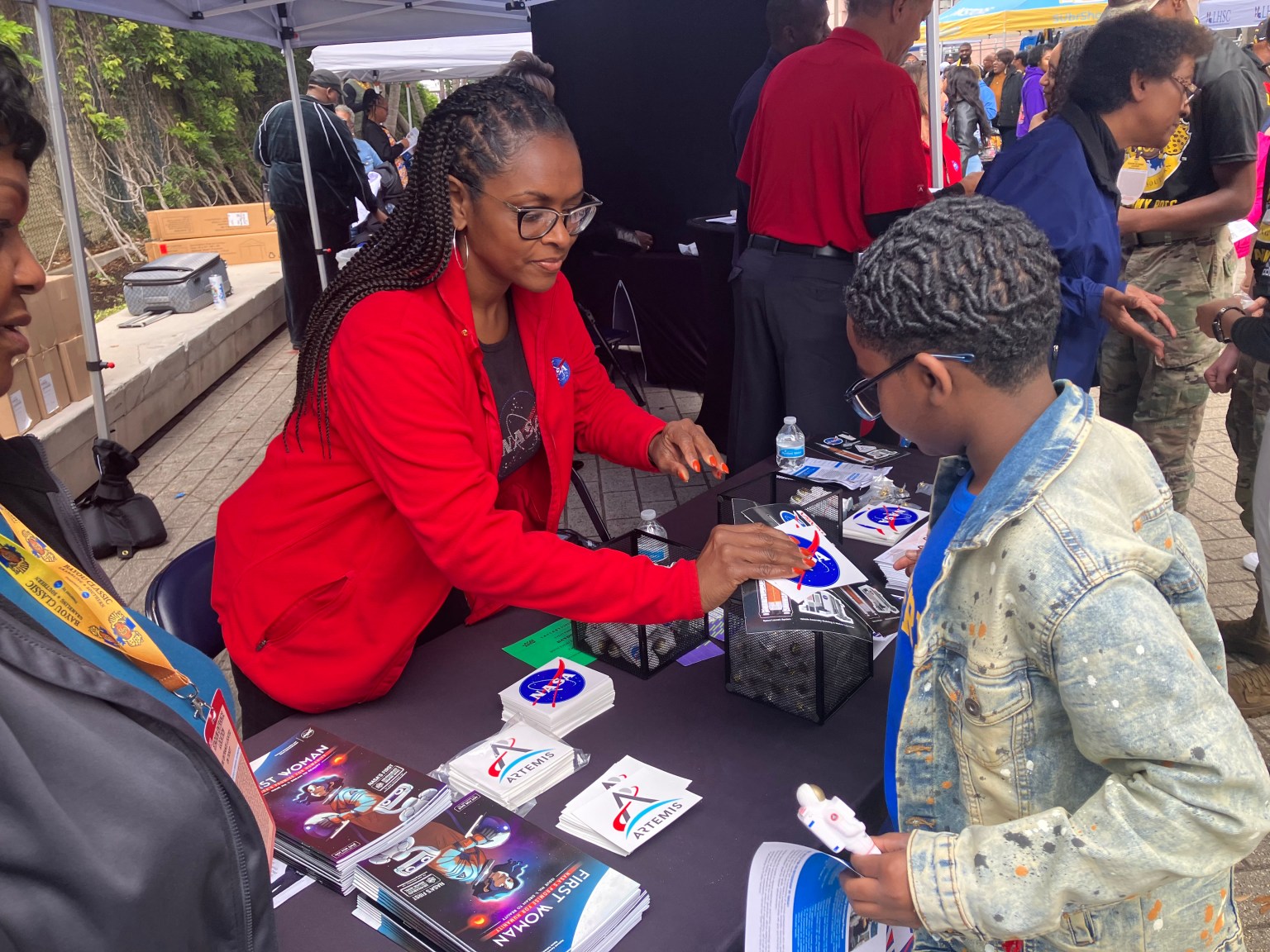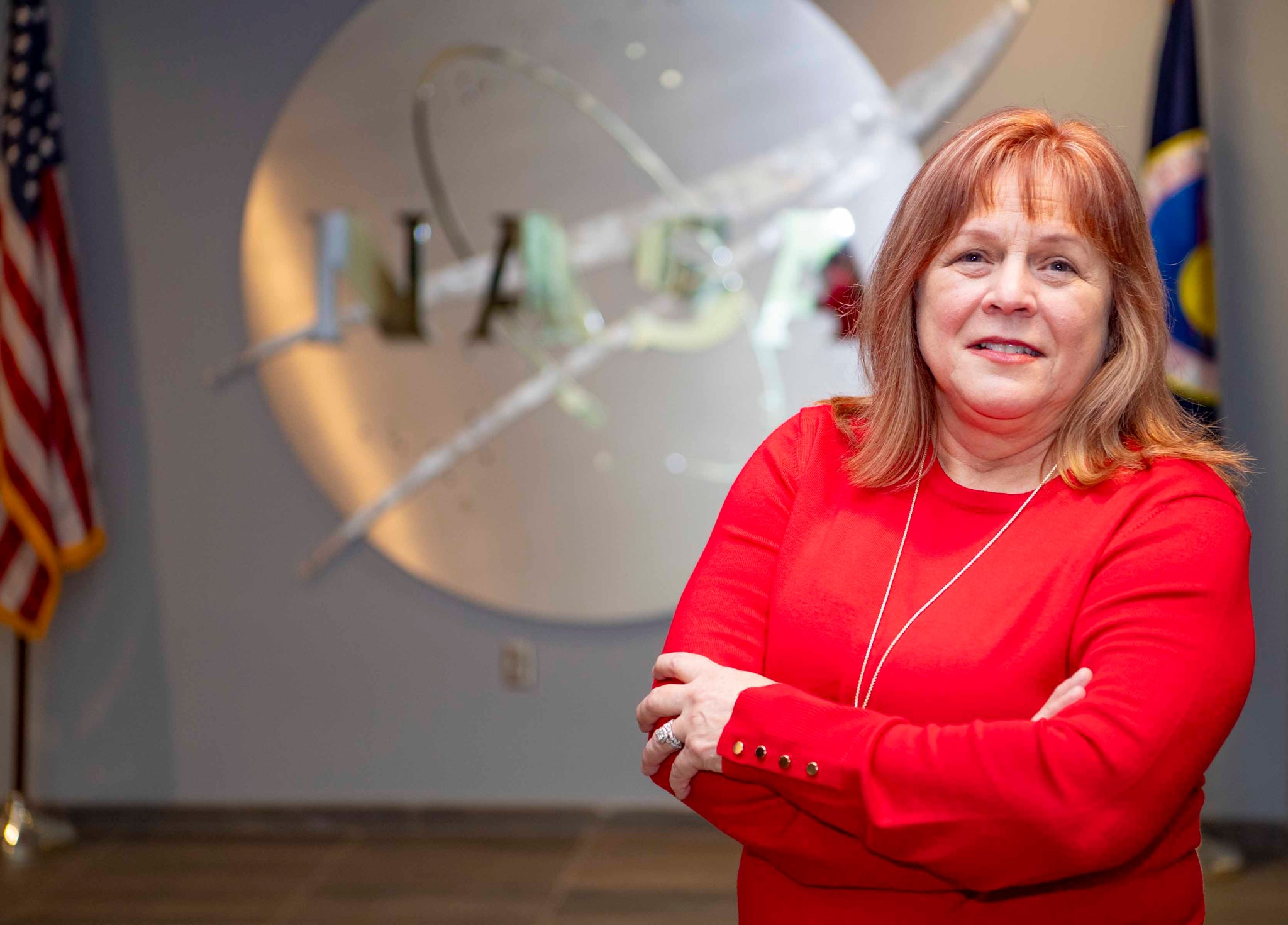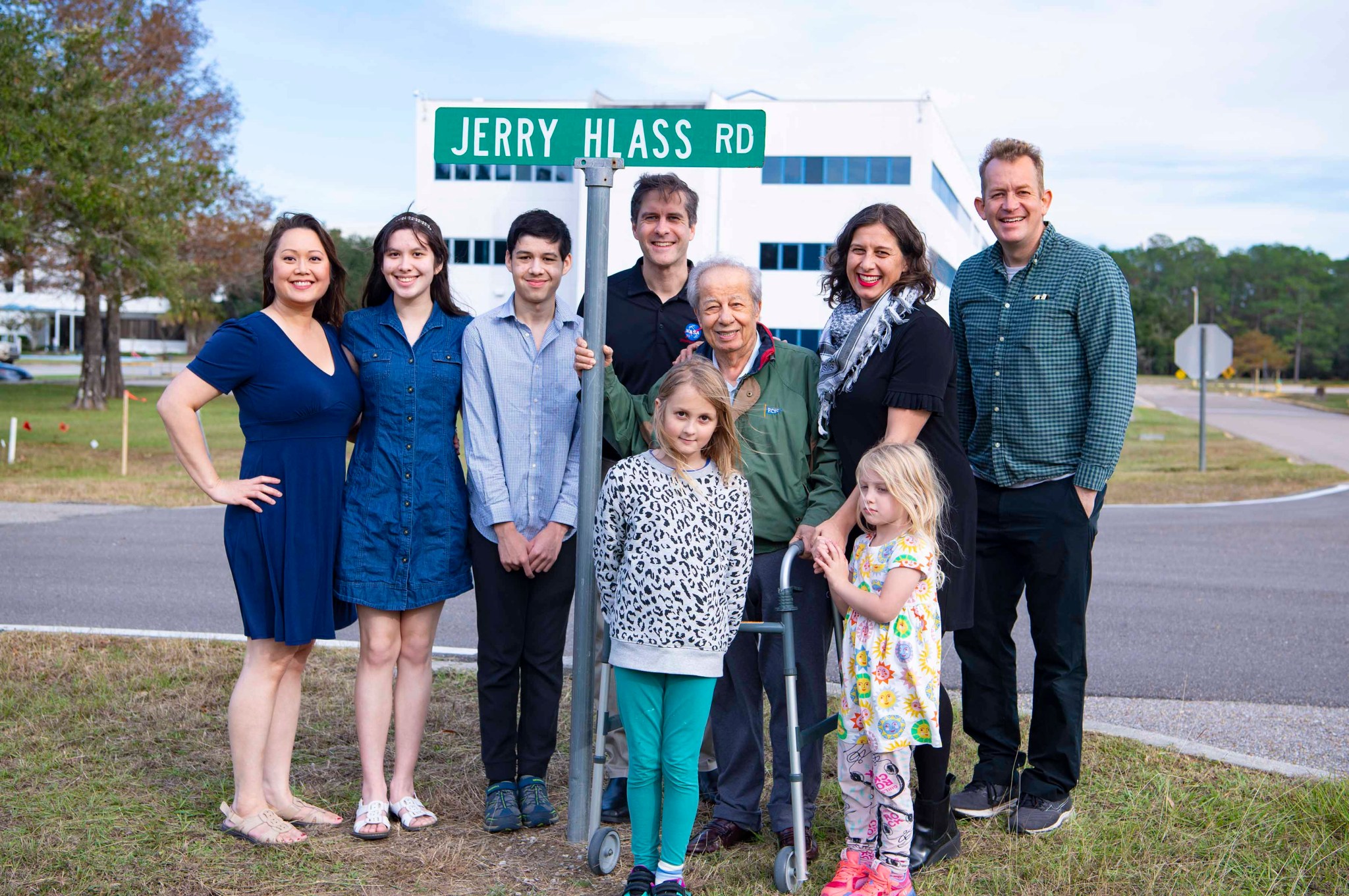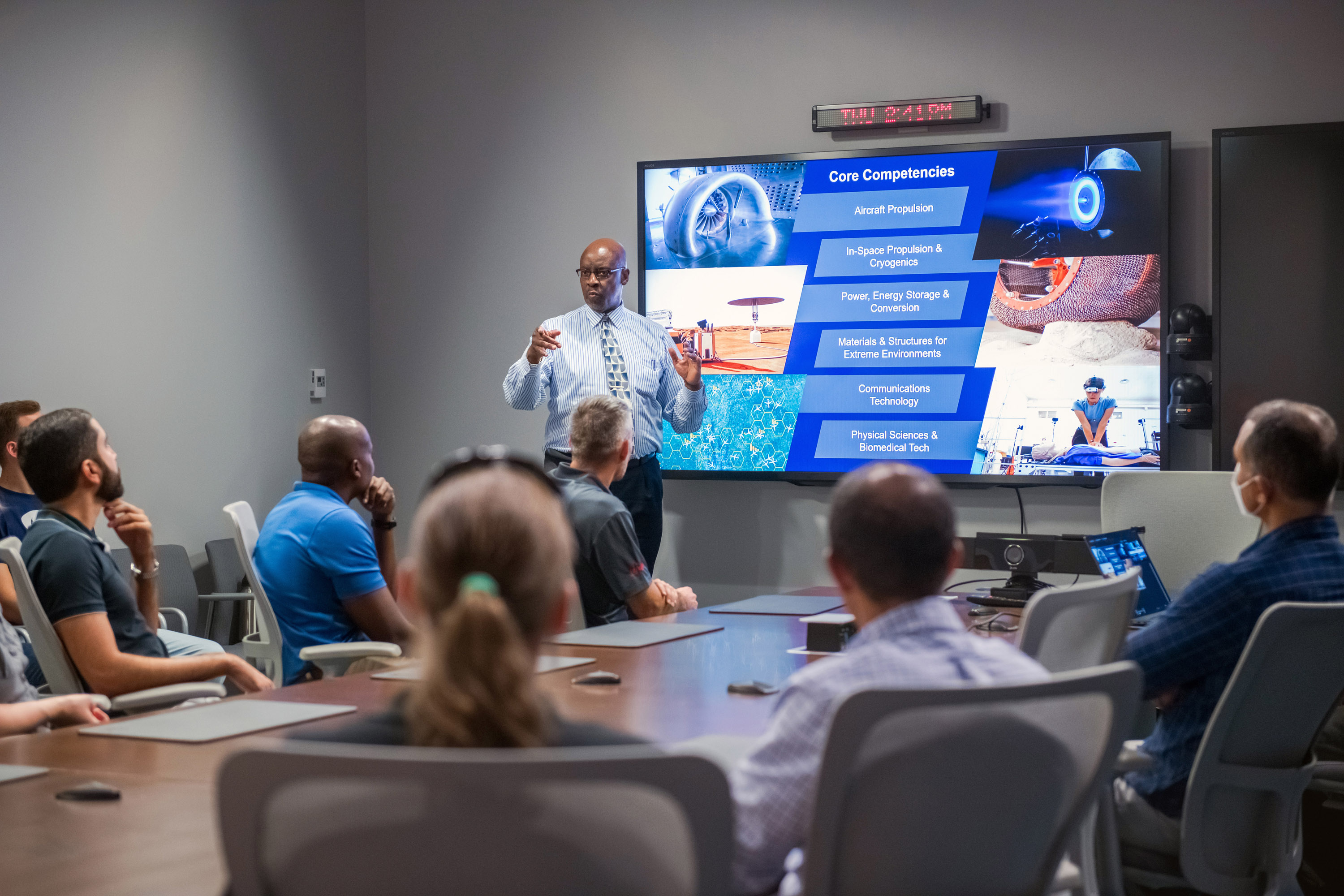Lagniappe
Explore the December 2023 edition featuring: Gator Speaks When planning for the holiday season, it is critical to have one’s ducks in a row… or gators in a line. Among other things, having something to talk about when friends or family visit is crucial. The sentiment rings true whether you are a human, or a […]
Lagniappe

Explore the December 2023 edition featuring:
- NASA Tests In-Flight Capability of Artemis Moon Rocket Engine
- NASA Delivers Inclusion Message to Annual Bayou Classic Participants
- Year-in-Review: NASA Stennis Celebrates 2023
Gator Speaks

When planning for the holiday season, it is critical to have one’s ducks in a row… or gators in a line. Among other things, having something to talk about when friends or family visit is crucial. The sentiment rings true whether you are a human, or a gator, and I have the perfect conversation activity this holiday season thanks to the final RS-25 engine test in November at NASA Stennis.
The 650-second test is likely the longest of the 12-test series. It involved a technique known as gimbaling, where the engine is pivoted throughout the hot fire. When the four RS-25 engines gimbal during launch of the SLS (Space Launch System) rocket, gimbaling helps stabilize the rocket as it reaches orbit.
To better understand how this works, think about hula hooping, which involves using body movements to twirl a plastic hoop that spins around one’s waist, neck, arm, or leg. Typically, younger folks participate in this activity, but I have learned you are never too old to give it a go. Maybe you cannot teach an old dog new tricks, but an old gator is another story. Ack!
Much like gimbaling an RS-25 engine, hula hooping can involve technical motions, although it is more about freestyle movement. As one might expect, an RS-25 engine test has a detailed plan with a list of objectives. Test operators pivot the engine in precise motions, on a circular basis or back-and-forth in a sort of sawtooth manner. The focus is ensuring the engine can move as needed to direct and stabilize the rocket during flight.
NASA is continuing the current RS-25 test series into 2024, which means more hot fires to come. I may bring my newly discovered hula hooping skills into the new year also. It will be perfect timing to shape up for a new, exciting year.
I have practiced through and through, so I expect everyone to be very impressed. If nothing else, it will be about a great source of amusement and laughter.
While I do not have footage of my hula hoop practice, I do have video of the engine gimbaling at NASA Stennis. When you watch it, imagine your favorite gator hula hooping.
Happy holidays, all!
NASA Stennis Top News
NASA Tests In-Flight Capability of Artemis Moon Rocket Engine
NASA conducted the third RS-25 engine hot fire in a critical 12-test certification series Nov. 29, demonstrating a key capability necessary for flight of the SLS (Space Launch System) rocket during Artemis missions to the Moon and beyond.
NASA Delivers Inclusion Message to Annual Bayou Classic Participants
NASA was on full display during the 50th Annual Bayou Classic Fan Fest activity in New Orleans on Nov. 25, hosting an informational booth and interacting with event participants to deliver a clear message – There’s Space for Everybody at NASA.
NASA Stennis Engineers Share the Stage on Test Day
The last Wednesday in November proved to be a full-circle moment for two engineers at NASA’s Stennis Space Center near Bay St. Louis, Mississippi.
NASA Stennis Continues Preparations for Future Artemis Testing
Crews at NASA’s Stennis Space Center cleared a milestone Dec. 11, installing a key component in preparation for future Green Run testing of NASA’s new Exploration Upper Stage (EUS) vehicle for use on the SLS (Space Launch System) rocket.
Year-in-Review: NASA Stennis Celebrates 2023
NASA’s Stennis Space Center celebrated accomplishments in a number of areas in 2023, including propulsion testing, commercial aerospace activities, community engagement, autonomous systems, strategic planning, and more.
Center Activities
Year-in-Review Snapshots: 2023 “Year that Was”
NASA’s Stennis Space Center steadily moved forward in 2023, while positioning itself to go even further in 2024. Check out the “year that was” by looking at 23 snapshots from 2023.
People Behind the Work at NASA Stennis
NASA’s Stennis Space Center brings together people from all backgrounds to support NASA’s mission to explore the secrets of the universe for the benefit of all and inspire the world through discovery.
NASA in the News
- Breaking Records, Returning Asteroid Samples Among NASA’s Big 2023
- New Course from NASA Helps Build Open, Inclusive Science Community – NASA
- NASA Continues Progress on Artemis III Rocket Adapter with Key Joint Installation – NASA
- 25 Years Ago: NASA, Partners Begin Space Station Assembly – NASA
- Artemis II Crew’s SLS Visit – NASA
Employee Profile

Anita Wilson could not hold back the tears as she reflected on the journey from her earliest space memory to now working at NASA’s Stennis Space Center near Bay St. Louis, Mississippi.
Looking Back

Hlass Celebrates Birthday with Visit to NASA Stennis
It was fitting that the first director of NASA’s Stennis Space Center chose to celebrate his 96th birthday by visiting the south Mississippi site with his family on Nov. 22. After all, Jerry Hlass had a lot to do with the “birth” of the modern propulsion test site.
NASA built what was then called the Mississippi Test Facility in the early 1960s to test Saturn V rocket stages that would carry humans to the Moon for the first time. When the Apollo Program ended in the early 1970s, the future of the test site seemed bleak.
Hlass was familiar with the south Mississippi facility. He had supervised facilities nationwide for NASA during the 1960s when the Mississippi site was under construction. In that capacity, Hlass made many trips to the site as he monitored the construction project.
Now, the site was the focal point of Hlass’ master’s thesis, titled “Search for a Role for a Large Government Facility,” at George Washington University. At the time, NASA was seeking a location to test engines for its planned space shuttle vehicle, and Hlass saw it as a perfect use of the Mississippi Test Facility.
When asked his opinion by the Site Evaluation Board, Hlass gave his case for the election of the Mississippi location for the test campaign. On March 1, 1971, the Mississippi Test Facility subsequently was selected for the sea-level testing of the rocket engines to power the space shuttle.
Several years later, on Sept. 1, 1976, Hlass was named manager of the very same site, by then known as the National Space Technology Laboratories. Before Hlass accepted the assignment of taking over the reins of the NSTL in 1976, NASA Headquarters had considered withdrawing the NASA management team from the installation. The small NASA onsite management team was responsible for providing support services to about 18 federal and state agencies and providing technical support to NASA’s Marshall Space Flight Center in Huntsville, Alabama, for the space shuttle test program. The Earth Resources Laboratory (ERL) was at the site, but it answered to NASA’s Johnson Space Center in Houston, and the Space Shuttle Test Complex was under Marshall management.
Hlass believed that NASA should be far more influential in the center’s management role. During his years as manager and director of the installation, Hlass was able to bring the ERL under site management and assume a much more direct and meaningful part in supporting the Space Shuttle Program. Through his efforts, Hlass gained the confidence of officials from NASA Headquarters and the respect of the Marshall test team and many other agencies in residence. As a result, the work accomplished by Hlass has been said to have resulted in the “reNASAfication” of the installation. Hlass retired as site leader in 1989. In honor of his leadership and significant contributions to NASA, the center unveiled a street sign designating Jerry Hlass Road onsite in 2015.
Additional Resources
Subscription Info
Lagniappe is published monthly by the Office of Communications at NASA’s Stennis Space Center. The NASA Stennis office may be contacted by at 228-688-3333 (phone); ssc-office-of-communications@mail.nasa.gov (email); or NASA OFFICE OF COMMUNICATIONS, Attn: LAGNIAPPE, Mail code IA00, Building 1111 Room 173, Stennis Space Center, MS 39529 (mail).
The Lagniappe staff includes: Managing Editor Lacy Thompson, Editor Bo Black, and photographer Danny Nowlin.
To subscribe to the monthly publication, please email the following to ssc-office-of-communications@mail.nasa.gov – name, location (city/state), email address.





































